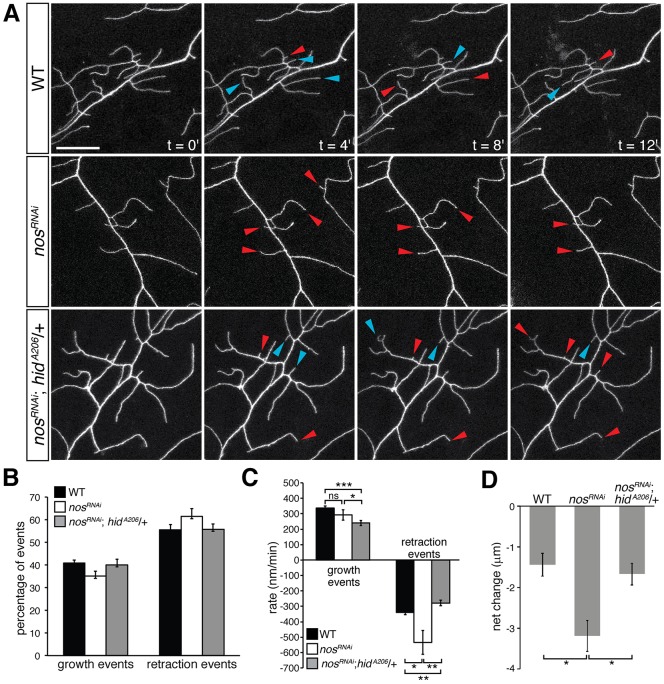Fig. 2.
nos-deficient class IV da neurons exhibit an increased rate of branch retraction in late L3 larvae. (A) Time-lapse confocal projections of dendrites from wild-type (WT), nosRNAi and nosRNAi; hidA206/+ larvae at 100 h AEL. GAL4477 was used to drive expression of both UAS-nosRNAi and UAS-CD4-GFP. Arrowheads indicate branches that are growing (blue) and retracting (red) with respect to the previous time point. Scale bar: 20 μm. (B) The frequency of occurrence of branch growth or retraction events as a fraction of the total number of events in WT, nosRNAi, and nosRNAi; hidA206/+ class IV da neurons. (C) Quantification of the average rate of branch growth and retraction in WT, nosRNAi, and nosRNAi; hidA206/+ class IV da neurons. (D) Mean net change in branch length in WT, nosRNAi, and nosRNAi; hidA206/+ class IV da neurons. Values are mean±s.e.m., n≥3 larvae for each genotype, 20 dendrites quantified per larva; ns, not significant; *P≤0.05, **P≤0.01, ***P≤0.0001.

